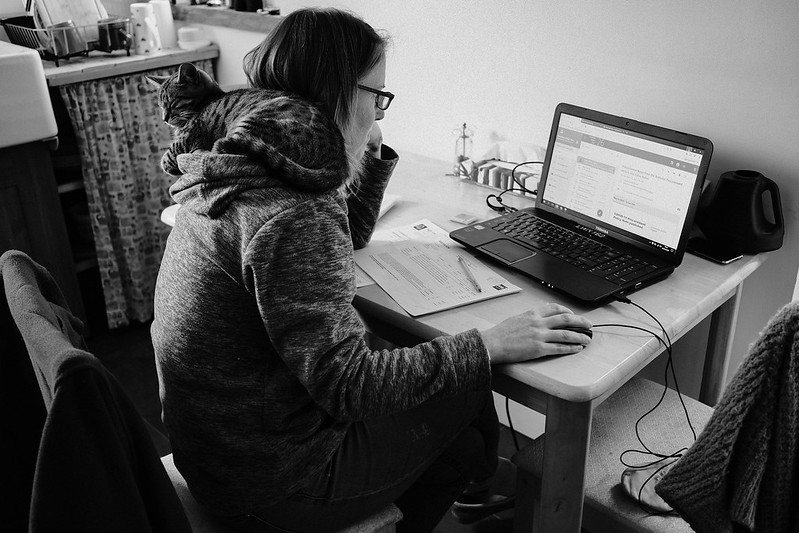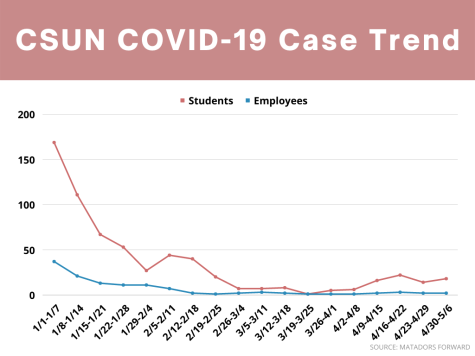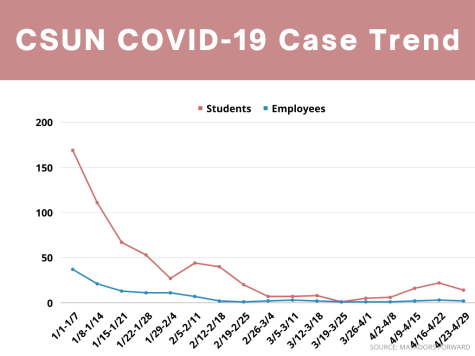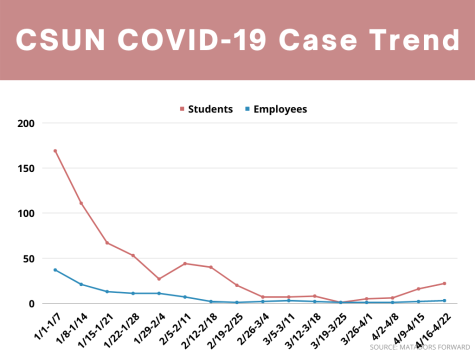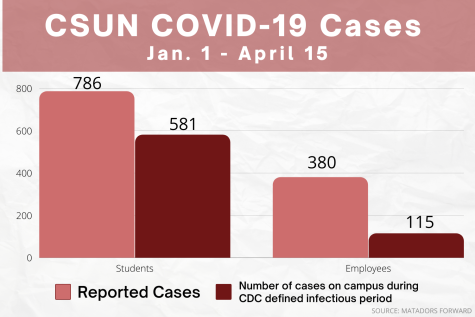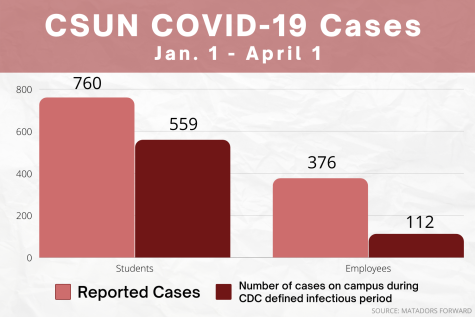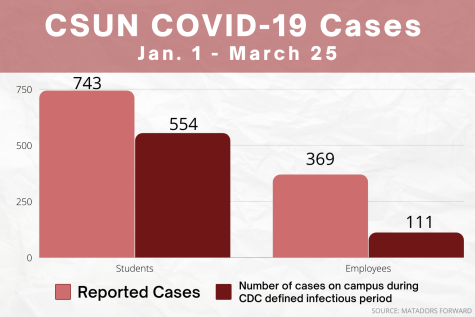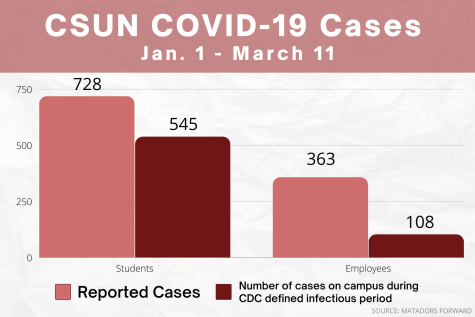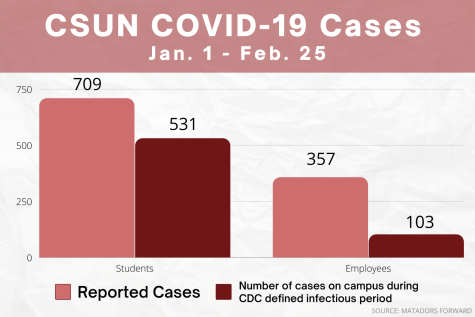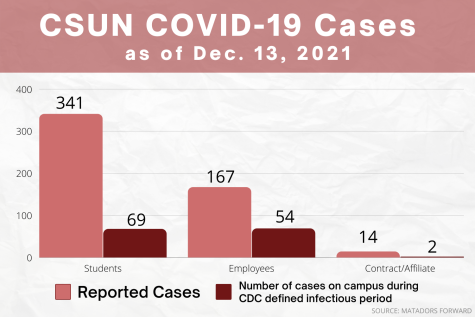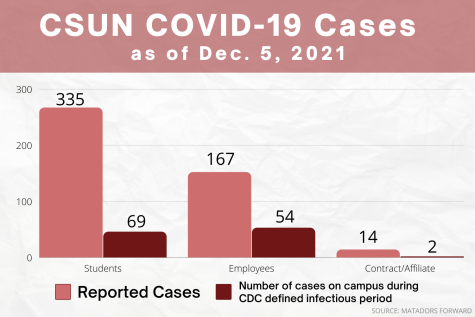Op-Ed: COVID-19 one year later
One year ago, people across the world began staying home as COVID-19 started its journey across the world.
March 11, 2021
I imagine that a lot of people will be writing about this anniversary, but this is my take on it.
Where were you on March 11, 2020? Where were you when you got a notification that classes will switch online for the rest of the semester?
For me, it began when I was on my way to history class when I got an email from the CSUN administration that classes will switch online in the week after spring break. Later that night, I went out to dinner with my friends where the TVs, which typically show sports, announced that the NBA season was suspended. As soon as our plates arrived, we got the news that Tom Hanks tested positive.
We knew about what was going on around the world, but we weren’t ready for it to hit close to home. We didn’t know that it would define 2020, and now into 2021.
One year ago, on March 11, 2020, the World Health Organization declared COVID-19 a global pandemic. However, on Jan. 20, 2020, the first COVID-19 case known in the United States was reported in Washington state. Throughout the rest of February, many of us at the time heard about this disease that has suddenly spread around the world.
March 11, 2020, will go down as one of these days where many remember where they were when it became known that our world was going to change forever. As I said before, 2020 may have actually started on March 11, not on Jan. 1 like every year.
And one year since the world came to a standstill, what has changed?
The days following March 11, 2020, we rushed to the stores and waited in line so we could buy all the water, hand sanitizers, disinfectants and the toilet paper that we could. Face masks joined the requirements of shirts and shoes. We were asked to remain in our homes and not go outside as much. Zoom became the norm for meetings, classes and communication. Vacations and weddings had to be canceled. “Lockdown” and “quarantine” entered our vocabulary.
I want to go back to a classroom, although I will be graduating this May. I want to go back to dining inside a restaurant where I can eat and chat all we want. I want to hang out with my friends again. I want to go back to a concert and sing along with my favorite artists. I want to go back to the stadium and cheer for my favorite teams. I’m not sure if I’m going to see the people I love for the last time. And I’m sure you agree with me on all of those things.
Many people have begged for schools to reopen. I’ll be honest: Learning is not the same when you’re at home staring at your computer compared to sitting in a classroom with your peers. Especially for elementary and middle schoolers, adapting to an online environment isn’t easy. While some cities have fully reopened their schools for in-person learning while wearing masks and enforcing safety protocols, others are preparing for reopening by this April, after a year of online learning.
At the same time, there are people who downplayed its severity, from common folks to politicians. Running around town without a mask makes it more likely that you and others will get infected. Thinking that COVID-19 is “a flu” that will go away by Easter? Why is it that people would rather value “freedom” than their own health, to the point of plotting to kidnap the governor of Michigan? Politicizing a health crisis? Come on!
We’ve seen people making a big fuss out of wearing a mask, we’ve seen incidents of people not wearing their masks getting called out on social media, and yes, the emergence of “Karens” (that’s a different story.) And these people who are not following the common good are still around today. We may be on the right path out of this pandemic, but it’s not going to be easy. Why did Texas and Mississippi announce that they will no longer enforce mask mandates, when there are still people fighting for their lives or worse, dying?
Throughout 2020, we tried our best to remain calm hoping for a better tomorrow. But we all grew impatient once the side effects of the pandemic kicked in.
We began to see some of our favorite stores, restaurants and clubs close for good because of the pandemic. Aside from real-world matters that we should care about such as the economy collapsing and people losing their jobs, some of us began to grow sick of staying at home all day or of Zoom classes. Our anxieties increased, as we became afraid of death while wishing for the world to go back to normal. We had fun binge-watching or creating trends on social media to distract ourselves from unavoidable real-world problems.
We began to see the value of in-person relationships as the months flew by. Families saw loved ones either leaving the world for the last time or fighting for their lives. As much as we have our families to support our self-esteem and vice versa, we miss our friends — a vital component of human happiness. While we have the phone and social media, a Zoom hangout isn’t the same as an in-person hangout. Kids are afraid of going outside as their childhoods have been interrupted, when compared to kids before the pandemic.
By December 2020, we had good news. Pfizer and Moderna’s vaccines were approved by the Food and Drug Administration, a much needed sigh of relief. But we also had bad news. December 2020 and January 2021 saw the most COVID-19 deaths, and on the first anniversary of the first known COVID-19 case in the United States, 400,000 Americans have died. On Feb.22, that number increased to 500,000. As of today, the United States has lost more people than American troops who died during World War I and World War II combined.
Vaccine rollout had a rocky start last December, as access to it was limited. Once vaccines became more available around the world, it became clear that everybody wants them. Appointments to get vaccinated are in high demand right now, but there aren’t enough available at the moment. People are cutting in lines hoping to get vaccinated quickly. Some people are even crossing state lines just to get vaccinated! As much as we want to get the vaccine, we must learn to be patient. Remember, there are people who need it more than we do, such as the elderly, medical staff, teachers and essential workers.
Just this Monday, the CDC announced new guidelines for people who are “fully vaccinated,” meaning people have to wait two weeks after receiving the vaccine. The guidelines state that fully vaccinated people can gather maskless with other fully vaccinated people, but they still have to wear masks in public while traveling is still not recommended. One of the big news that came out of the CDC’s new guidelines was that vaccinated grandparents can visit their unvaccinated grandchildren, but these long-coveted reunions have to wait.
We’ve spent a year being told that we must “flatten the curve.” The curve instead went up and down, and as of the time of this writing, it’s heading downwards. New hospital admittances have decreased. More people are receiving the vaccine. Fans are starting to come back to the stands, albeit at limited capacities.
COVID-19 will not go away overnight. We’re still rolling out vaccines nationwide and worldwide. While vaccination has already started, not everyone has been vaccinated yet and we would need to increase the production of vaccines. I’m sure that we’ll have enough vaccines by this summer so we can all get vaccinated, but I advise to not take a vacation just yet. The hope is that everyone can travel and see their loved ones again by this Thanksgiving, but I would wait another month for Christmas.
In the meantime, please be responsible if you want to go back to a pre-pandemic world sooner. Hold on to your masks and keep wearing them when going outside. Be sure to wash your hands every day. If you’re feeling sick, please stay home. Keep maintaining social distancing. And wait your turn to receive the vaccine. If I’m willing to wait another year to enjoy every pre-pandemic activity again, you should be, too.
We can do this. It may not be easy, but be assured that we’re now in the final stretch. Let’s hope that by March 11, 2022, our world is back to the way it was before March 11, 2020. Save your strongest hug or your longest kiss for that long-coveted day.
